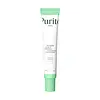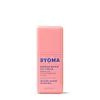What's inside
What's inside
 Key Ingredients
Key Ingredients

 Benefits
Benefits

 Concerns
Concerns

 Ingredients Side-by-side
Ingredients Side-by-side

Water
Skin ConditioningHydrogenated Poly(C6-14 Olefin)
EmollientButylene Glycol
HumectantGlycerin
HumectantCetyl Ethylhexanoate
EmollientCaprylic/Capric Triglyceride
MaskingCentella Asiatica Extract
CleansingCetyl Alcohol
EmollientDipropylene Glycol
HumectantMethyl Trimethicone
Skin Conditioning1,2-Hexanediol
Skin ConditioningDipentaerythrityl Hexa C5-9 Acid Esters
Skin ConditioningPentaerythrityl Tetraisostearate
EmollientPotassium Cetyl Phosphate
EmulsifyingPalmitoyl Dipeptide-10
Skin ConditioningPalmitoyl Tetrapeptide-7
Skin ConditioningPalmitoyl Tripeptide-1
Skin ConditioningPalmitoyl Hexapeptide-12
Skin ConditioningSodium Hyaluronate
HumectantAsiaticoside
AntioxidantMadecassic Acid
Skin ConditioningAsiatic Acid
Skin ConditioningMadecassoside
AntioxidantCetearyl Alcohol
EmollientCetearyl Olivate
Sorbitan Olivate
EmulsifyingCaprylyl Glycol
EmollientPalmitic Acid
EmollientPanthenol
Skin ConditioningStearic Acid
CleansingCetearyl Glucoside
EmulsifyingCarbomer
Emulsion StabilisingTromethamine
BufferingLimnanthes Alba Seed Oil
Skin ConditioningArgania Spinosa Kernel Oil
EmollientCeramide NP
Skin ConditioningMacadamia Ternifolia Seed Oil
EmollientAdenosine
Skin ConditioningDisodium EDTA
Butyrospermum Parkii Butter
Skin ConditioningGlucose
HumectantMyristic Acid
CleansingArachidic Acid
CleansingCamellia Sinensis Leaf Extract
AntimicrobialWater, Hydrogenated Poly(C6-14 Olefin), Butylene Glycol, Glycerin, Cetyl Ethylhexanoate, Caprylic/Capric Triglyceride, Centella Asiatica Extract, Cetyl Alcohol, Dipropylene Glycol, Methyl Trimethicone, 1,2-Hexanediol, Dipentaerythrityl Hexa C5-9 Acid Esters, Pentaerythrityl Tetraisostearate, Potassium Cetyl Phosphate, Palmitoyl Dipeptide-10, Palmitoyl Tetrapeptide-7, Palmitoyl Tripeptide-1, Palmitoyl Hexapeptide-12, Sodium Hyaluronate, Asiaticoside, Madecassic Acid, Asiatic Acid, Madecassoside, Cetearyl Alcohol, Cetearyl Olivate, Sorbitan Olivate, Caprylyl Glycol, Palmitic Acid, Panthenol, Stearic Acid, Cetearyl Glucoside, Carbomer, Tromethamine, Limnanthes Alba Seed Oil, Argania Spinosa Kernel Oil, Ceramide NP, Macadamia Ternifolia Seed Oil, Adenosine, Disodium EDTA, Butyrospermum Parkii Butter, Glucose, Myristic Acid, Arachidic Acid, Camellia Sinensis Leaf Extract
Water
Skin ConditioningGlycerin
HumectantCaprylic/Capric Triglyceride
MaskingPhenyl Trimethicone
Skin ConditioningCetyl Ethylhexanoate
EmollientHyaluronic Acid
HumectantHydrolyzed Hyaluronic Acid
HumectantSodium Hyaluronate
HumectantPropanediol
SolventCopper Tripeptide-1
Skin ConditioningButyrospermum Parkii Butter
Skin ConditioningSphingolipids
EmollientEthylhexylglycerin
Skin ConditioningCeramide NP
Skin ConditioningDipropylene Glycol
HumectantButylene Glycol
HumectantCaprylic/Capric/Succinic Triglyceride
EmollientVinyldimethicone
Acrylates/C10-30 Alkyl Acrylate Crosspolymer
Emulsion StabilisingXanthan Gum
EmulsifyingPolyglyceryl-2 Stearate
EmulsifyingGlyceryl Stearate
EmollientStearyl Alcohol
EmollientGlycereth-26
HumectantCetearyl Alcohol
EmollientEctoin
Skin Conditioning1,2-Hexanediol
Skin ConditioningGlycine
BufferingTheobroma Cacao Seed Extract
AntioxidantThamnolia Vermicularis Leaf Extract
Skin ConditioningCoptis Japonica Root Extract
Skin ConditioningHydroxyacetophenone
AntioxidantAmmonium Polyacryloyldimethyl Taurate
Emulsion StabilisingDextrin
AbsorbentTromethamine
BufferingDisodium EDTA
Water, Glycerin, Caprylic/Capric Triglyceride, Phenyl Trimethicone, Cetyl Ethylhexanoate, Hyaluronic Acid, Hydrolyzed Hyaluronic Acid, Sodium Hyaluronate, Propanediol, Copper Tripeptide-1, Butyrospermum Parkii Butter, Sphingolipids, Ethylhexylglycerin, Ceramide NP, Dipropylene Glycol, Butylene Glycol, Caprylic/Capric/Succinic Triglyceride, Vinyldimethicone, Acrylates/C10-30 Alkyl Acrylate Crosspolymer, Xanthan Gum, Polyglyceryl-2 Stearate, Glyceryl Stearate, Stearyl Alcohol, Glycereth-26, Cetearyl Alcohol, Ectoin, 1,2-Hexanediol, Glycine, Theobroma Cacao Seed Extract, Thamnolia Vermicularis Leaf Extract, Coptis Japonica Root Extract, Hydroxyacetophenone, Ammonium Polyacryloyldimethyl Taurate, Dextrin, Tromethamine, Disodium EDTA
 Reviews
Reviews

Ingredients Explained
These ingredients are found in both products.
Ingredients higher up in an ingredient list are typically present in a larger amount.
1,2-Hexanediol is a synthetic liquid and another multi-functional powerhouse.
It is a:
- Humectant, drawing moisture into the skin
- Emollient, helping to soften skin
- Solvent, dispersing and stabilizing formulas
- Preservative booster, enhancing the antimicrobial activity of other preservatives
Butylene Glycol (or BG) is used within cosmetic products for a few different reasons:
Overall, Butylene Glycol is a safe and well-rounded ingredient that works well with other ingredients.
Though this ingredient works well with most skin types, some people with sensitive skin may experience a reaction such as allergic rashes, closed comedones, or itchiness.
Learn more about Butylene GlycolThis ingredient is also known as shea butter. It is an effective skin hydrator and emollient.
Emollients help soothe and soften your skin. It does this by creating a protective film on your skin. This barrier helps trap moisture and keeps your skin hydrated. Emollients may be effective at treating dry or itchy skin.
Shea butter is rich in antioxidants. Antioxidants help fight free-radicals, or molecules that may harm the body. It is also full of fatty acids including stearic acid and linoleic acid. These acids help replenish the skin and keep skin moisturized.
While Shea Butter has an SPF rating of about 3-4, it is not a sunscreen replacement.
Shea butter may not be fungal acne safe. We recommend speaking with a professional if you have any concerns.
Learn more about Butyrospermum Parkii ButterThis ingredient is an emollient, solvent, and texture enhancer. It is considered a skin-softener by helping the skin prevent moisture loss.
It helps thicken a product's formula and makes it easier to spread by dissolving clumping compounds.
Caprylic Triglyceride is made by combining glycerin with coconut oil, forming a clear liquid.
While there is an assumption Caprylic Triglyceride can clog pores due to it being derived from coconut oil, there is no research supporting this.
Learn more about Caprylic/Capric TriglycerideCeramide NP is a type of ceramide and formally known as ceramide 3.
Ceramides are intercellular lipids naturally found in our skin that bonds dead skin cells together to create a barrier. They are known for their ability to hold water and thus are a great ingredient for dry skin.
Ceramides are an important building block for our skin barrier. A stronger barrier helps the skin look more firm and hydrated. By bolstering the skin ceramides act as a barrier against irritating ingredients. This can help with inflammation as well.
If you would like to eat ceramides, sweet potatoes contain a small amount.
Read more about other common types of ceramides here:
Ceramide AP
Ceramide EOP
Cetearyl alcohol is a mixture of two fatty alcohols: cetyl alcohol and stearyl alcohol. It is mainly used as an emulsifier. Emulsifiers help prevent the separation of oils and products. Due to its composition, it can also be used to thicken a product or help create foam.
Cetearyl alcohol is an emollient. Emollients help soothe and hydrate the skin by trapping moisture.
Studies show Cetearyl alcohol is non-toxic and non-irritating. The FDA allows products labeled "alcohol-free" to have fatty alcohols.
This ingredient is usually derived from plant oils such as palm, vegetable, or coconut oils. There is debate on whether this ingredient will cause acne.
Due to the fatty acid base, this ingredient may not be Malassezia folliculitis safe.
Learn more about Cetearyl AlcoholCetyl Ethylhexanoate is an emollient ester. It comes from cetearyl alcohol and 2-ethylhexanoic acid.
Cetyl Ethylhexanoate is an emollient that adds a velvety feel to skin without being greasy or oily. Emollients help trap moisture into your skin, keeping your skin soft and hydrated.
Dipropylene Glycol is a synthetically created humectant, stabilizer, and solvent.
This ingredient helps:
Dipropylene glycol is technically an alcohol, but it belongs to the glycol family (often considered part of the ‘good’ alcohols). This means it is hydrating and gentle on skin unlike drying solvent alcohols like denatured alcohol.
As a masking agent, Dipropylene Glycol can be used to cover the smell of other ingredients. However, it does not have a scent.
Studies show Dipropylene Glycol is considered safe to use in skincare.
Learn more about Dipropylene GlycolDisodium EDTA plays a role in making products more stable by aiding other preservatives.
It is a chelating agent, meaning it neutralizes metal ions that may be found in a product.
Disodium EDTA is a salt of edetic acid and is found to be safe in cosmetic ingredients.
Learn more about Disodium EDTAGlycerin is already naturally found in your skin. It helps moisturize and protect your skin.
A study from 2016 found glycerin to be more effective as a humectant than AHAs and hyaluronic acid.
As a humectant, it helps the skin stay hydrated by pulling moisture to your skin. The low molecular weight of glycerin allows it to pull moisture into the deeper layers of your skin.
Hydrated skin improves your skin barrier; Your skin barrier helps protect against irritants and bacteria.
Glycerin has also been found to have antimicrobial and antiviral properties. Due to these properties, glycerin is often used in wound and burn treatments.
In cosmetics, glycerin is usually derived from plants such as soybean or palm. However, it can also be sourced from animals, such as tallow or animal fat.
This ingredient is organic, colorless, odorless, and non-toxic.
Glycerin is the name for this ingredient in American English. British English uses Glycerol/Glycerine.
Learn more about GlycerinSodium Hyaluronate is hyaluronic acid's salt form. It is commonly derived from the sodium salt of hyaluronic acid.
Like hyaluronic acid, it is great at holding water and acts as a humectant. This makes it a great skin hydrating ingredient.
Sodium Hyaluronate is naturally occurring in our bodies and is mostly found in eye fluid and joints.
These are some other common types of Hyaluronic Acid:
Learn more about Sodium HyaluronateTromethamine helps balance the pH and improve the texture of a product. It is synthetically created.
As an emulsifier, Tromethamine prevents oil and water ingredients from separating. This helps stabilize the product and elongate a product's shelf life. Tromethamine also makes a product thicker.
Tromethamine helps balance the pH level of a product. Normal pH level of skin is slightly acidic (~4.75-5.5). The acidity of our skin is maintained by our glands and skin biome. Being slightly acidic allows our skin to create an "acid mantle". This acid mantle is a thin barrier that protects our skin from bacteria and contaminants.
Oral Tromethanmine is an anti-inflammatory drug but plays the role of masking, adding fragrance, and/or balancing pH in skincare.
1,3-Propanediol, 2-amino-2-(hydroxymethyl)-
Learn more about TromethamineWater. It's the most common cosmetic ingredient of all. You'll usually see it at the top of ingredient lists, meaning that it makes up the largest part of the product.
So why is it so popular? Water most often acts as a solvent - this means that it helps dissolve other ingredients into the formulation.
You'll also recognize water as that liquid we all need to stay alive. If you see this, drink a glass of water. Stay hydrated!
Learn more about Water